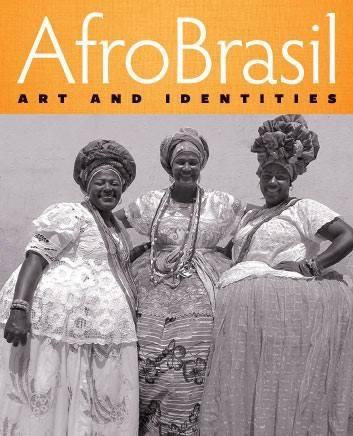Brazil* hosted soccer’s World Cup in the summer of 2014, and soon will host the 2016 Summer Olympics. While many are familiar with these events and Brazil’s other achievements, they may be unaware of the cultural and ethnic complexity of this large South American country.
The largest Portuguese-speaking country in the world, Brazil is home to the second largest population of African origin outside the African continent. Yet, despite its sporadic economic dynamism, its soccer prowess (who has not heard of Pelé, the “Black Pearl”?), the fame of its Carnaval, and the acclaim given the 1959 Oscar-winning French film Black Orpheus (Orfeu Negro), starring Afro-Brazilian actors, many aspects of its Afro-Brazilian identity, art, and culture have not received the status or attention they merit.
Today, Afro-Brazilian art and identities saturate the core of Brazilian culture and society, but may not rise commensurately to the surface in galleries, museums, or the works of art historians. The artists, writers, musicians, and critics who do tackle Afro-Brazilian reality more often than not narrate; in doing so they include their personal experiences in a unique multi-racial and multi-ethnic nation-state. AfroBrasil: Art and Identities shows the multiple important ways in which Afro-Brazilian artists and their colleagues from other countries address the complexities of Brazil’s African heritage and its impact across frontiers and oceans.
Using a team approach, the exhibition has been curated to comprise four distinct, yet inter-related, sections, which can be visited in any order to make different connections and gain different perspectives.
The introduction highlights works from the Latin American collections in the University of New Mexico’s Center for Southwest Research as well as the UNM Art Museum, and features historic, romanticized photos of Afro-Brasileiros. It also highlights the importance of cordeles (chapbooks) purchased in the streets of Afro-Brazilian communities. These affordable pieces of literature often document and detail the history of Afro-Brazilians, a history still not often validated.
The second section showcases an exquisite series of lithographs from the University of New Mexico’s Tamarind Institute. The Institute’s 2012 project, “AFRO: Black Identity in America,” invited three artists from Brazil and three from North America to collaborate and create works based on issues of identity.
The next section highlights the research and work of Paulo Lima, who recently completed his Ph.D. in Theater and Performance Studies at the University of California-Los Angeles. His photographic images and dressed figures focus specifically on garments worn by practitioners of the Afro-Brazilian religion Candomblé, a religion with roots in Brazil since the beginning of the 18th century, when Brasil was still the jewel in the crown of the world-wide Portuguese Empire.
The final section draws again from the extensive Latin American collections of UNM’s Center for Southwest Research, as well as private collections. It portrays the popular and religious culture of Candomblé in its varied forms, from offerings to the Orixás (Yoruba deities) to posters popularizing the Orixás as superheroes, and helps contextualize all themes that run through the exhibition.
Photograph: Baianas (Praça de Sé, Salvador, Bahia), Paulo Lima, 2013, courtesy of the artist
*Brasil is spelled with an “s” in Portuguese and Spanish, with a “z” in English. Text and label materials in this exhibition use both spellings, depending on context.


